SUMMARY
This is AI generated summarization, which may have errors. For context, always refer to the full article.
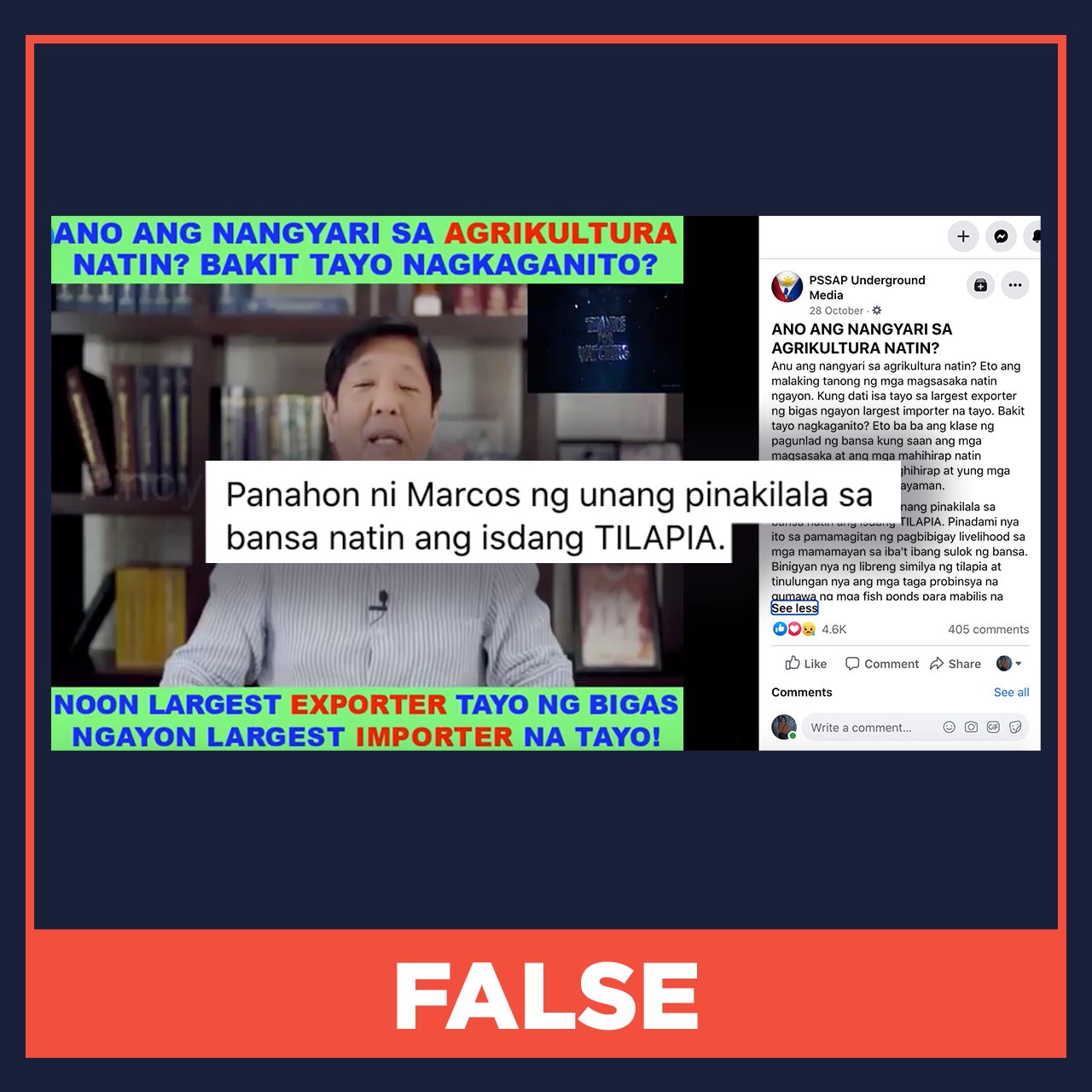
At a glance:
- Claim: It was during the time of former Philippine President Ferdinand Marcos when tilapia was first introduced to the Philippines.
- Rating: FALSE
- The facts: Tilapia was introduced to the Philippines as early as 1950 by former Director of the Bureau of Fisheries Deogracias Villadolid.
- Why we fact checked this: The claim was made in a Facebook post on the page “PSSAP Underground Media” on October 28, 2020. As of writing, the post has 4,664 reactions, 405 comments, and 2,099 shares. The video in the post has around 69,200 views. Multiple Facebook posts dating as far back as 2016 contain the claim.
Complete details:
Several Facebook posts contain the claim that tilapia was first introduced to the country during the administration of former president Ferdinand Marcos, which happened from 1965 to 1986.
A post by the Facebook page “PSSAP Underground Media” dated October 28 said: “Panahon ni Marcos ng unang pinakilala sa bansa natin ang isdang TILAPIA.” (It was during Marcos’ time that our country was introduced to the fish tilapia.)
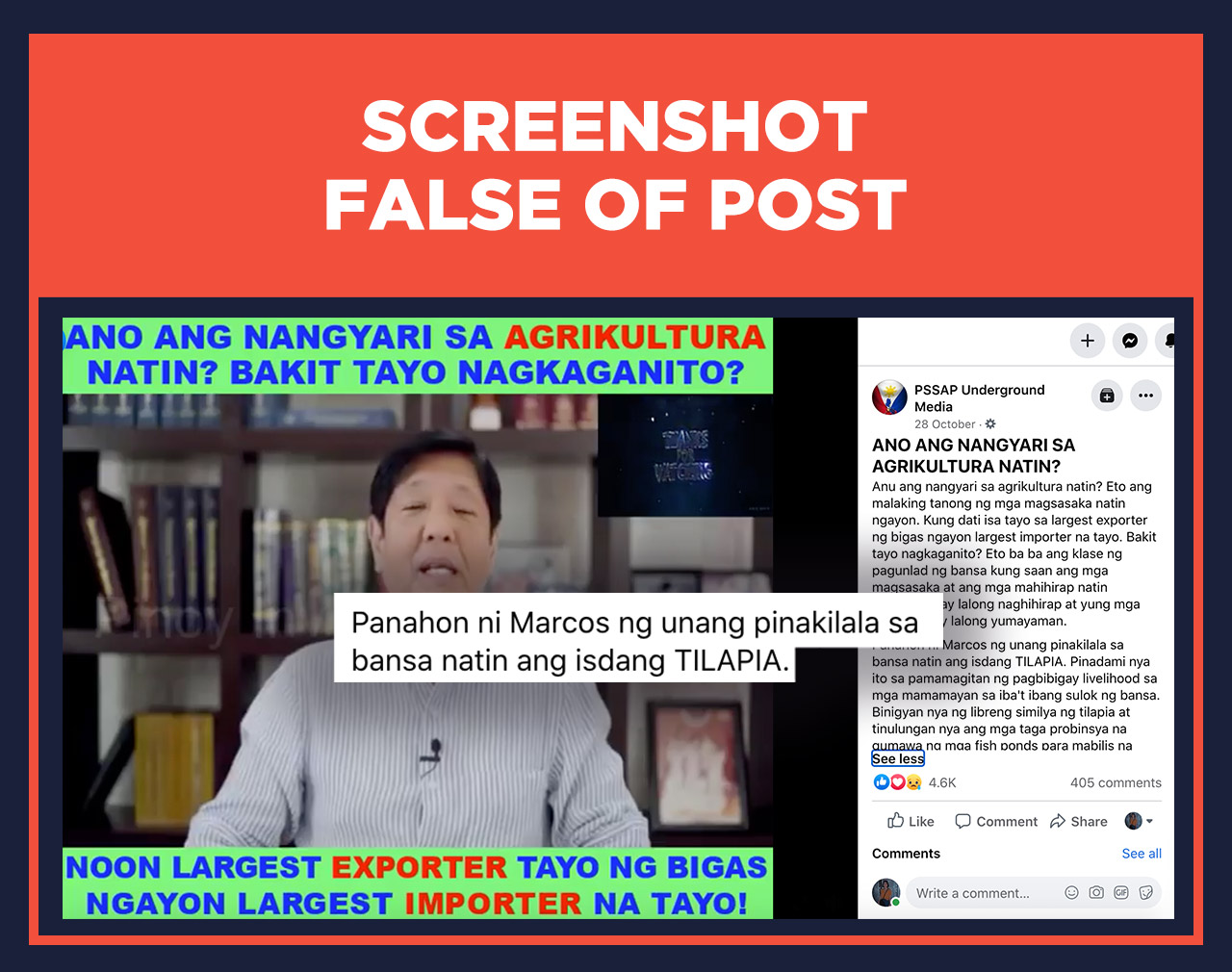
As of posting, it has 4,664 reactions, 405 comments, and 2,099 shares. The video in the post has around 69,200 views.
The claim is false.
Tilapia was introduced to the Philippines in 1950, through the initiative of biologist Deogracias Villadolid, the director of the Bureau of Fisheries at that time.
In the publication “The Specialized Philippine Enterprise Reference of Experts and Scientists” (SPHERES) by the Department of Science and Technology (DOST), Villadolid’s profile states: “It was Dr Villadolid who introduced tilapia in the Philippines in 1950 when he was Director of the Bureau of Fisheries. He also initiated fisheries education in the country. For this reason, he is known as the Father of Fisheries Education in the Philippines.”
This profile can also be found in an article by librarian Melchor V. Cichon titled “Father of Fisheries Education in the Philippines” published in the January-March 1996 issue of the journal Otolith. This was republished by the Iloilo-based publication Daily Guardian.
Villadolid has numerous contributions to the field of marine biology and fisheries education. He has over a hundred publications in his name. Some of his published titles mentioning “tilapia” listed in the “Publications” section of his SPHERES profile were published from 1954 to 1960, which shows that tilapia cultivation was already put into practice in the country before Marcos’ presidency began in 1965.
An article by Rafael D. Guerrero III titled “Farmed Tilapia Production in the Philippines Is Declining: What Has Happened and What Can Be Done,” published in the June 2019 issue of DOST’s Philippine Journal of Science, also acknowledged tilapia’s introduction to the Philippines during 1950. It said: “While the milkfish is an indigenous fish, the Mozambique tilapia (Oreochromis mossambicus) was first introduced in the country in 1950 from Thailand followed by the Nile tilapia (O. niloticus) in 1972 and other species (O.aureus, O. hornorum, Coptodon zillii, and Sarotherodon melanotheron).”
A document by the Food and Agriculture Organization (FAO) of the United Nations (UN), “Rural Aquaculture in the Philippines,” written by Wilfredo G. Yap, concurs with 1950 being the year of introduction of tilapia to the Philippines. This is stated in the document section 2.1.6, “Tilapia,” where it says, “In 1950 the late Dr Deogracias Villadolid, Director of the then-Bureau of Fisheries, brought in the first tilapia (Oreochromis mossambicus) from Thailand.”
PSSAP Underground Media has two posts from 2016 containing the same claim. The post dated October 27, 2016 had 1,336 reactions, 114 comments, and 661 shares as of time of writing, while the post dated June 7, 2016 had 5,749 reactions, 492 comments, and 6,517 shares as of time of writing.
PSSAP Underground Media’s claim was also shared by numerous Facebook groups and pages. Others posted a similar claim on their own. Below is a partial list:
- United Cordillerans Supporting BBM (Facebook page)
- We Love Marcos Family BBM for 2016 (Facebook page)
- MARCOS PA RIN (Facebook group)
- BONGBONG MARCOS WORLDWIDE ALLIANCE (Facebook group)
- IMEE Solusyon, Keri Yan – SKY (Facebook page)
- Duterte Fact News (Facebook page)
- Pinoy History and Social Media News (Facebook page)
- LOYALIST FOR MARCOS 2022 (Facebook group)
- Manang Imee Marcos (Facebook group)
- MARCOS LOYALIST (Facebook group)
- APO LAKAY BONG BONG MARCOS PILIPINAS SOLID GROUP..ALBBMPSG 2022.. (Facebook group)
- BONGBONG MARCOS FOR PROGRESS PEACE AND PROSPERITY 2022. (Facebook group)
- Mayor Isko & President Duterte Supporters (Facebook group)
- Tulfo Brothers Worldwide (Facebook group)
- Ferdinand BongBong Marcos Jr. For President Movement 2022 (Facebook group)
- MARCOS DEFENDERS WORLDWIDE UNLIMITED (Facebook group)
- REAL PHILIPPINE HISTORY (Facebook group)
- Marcos Duterte movement election 2022 (Facebook group)
- BongBong Marcos United (Facebook group)
- PHILIPPINE FEDERAL MOVEMENT INTERNATIONAL (Facebook group)
The post also claimed that the Philippines did not export rice after the Marcos administration, but this is false.
Rappler has fact checked “PSSAP Underground Media” before when they said the Priority Development Assistance Fund (PDAF), or “pork barrel,” was part of the Philippine Constitution and a “legacy” of former President Corazon Aquino. – Percival Bueser/Rappler.com
This article was written by a volunteer of Rappler’s fact-checking mentorship program, a 5-week exclusive and hands-on training on detecting, investigating, and verifying online misinformation and disinformation.
Keep us aware of suspicious Facebook pages, groups, accounts, websites, articles, or photos in your network by contacting us at factcheck@rappler.com. Let us battle disinformation one Fact Check at a time.
Add a comment
How does this make you feel?
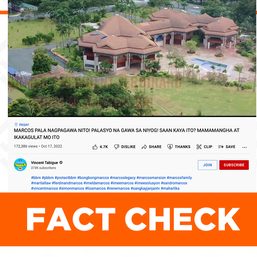

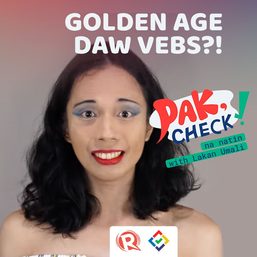
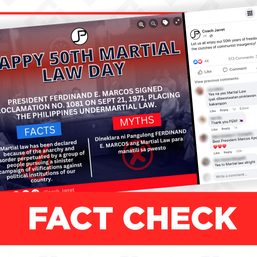
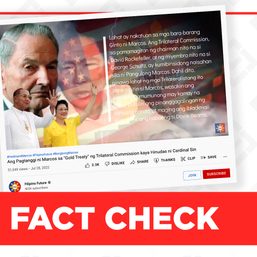
There are no comments yet. Add your comment to start the conversation.